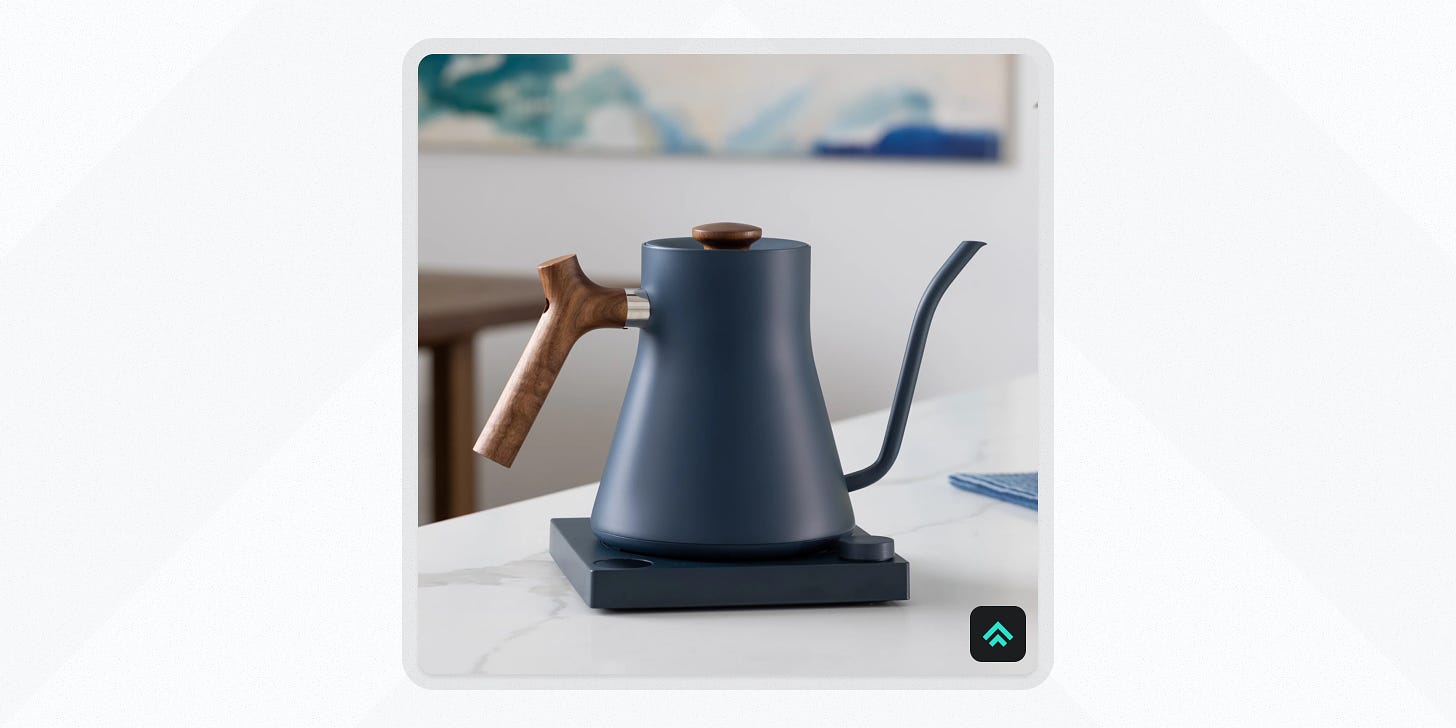
Hello! I’m Pat and Better by Design is my newsletter sharing pragmatic insights for creative innovation through the lens of design. If you’re new here, join our growing tribe of design innovators!

The gooseneck kettle
The gooseneck kettle evolved over time from a simple utilitarian object to a refined symbol of the third-wave coffee movement. Named after its distinct, long, narrow spout resembling a goose's neck, this type of kettle brings precision and control to brewing.
The gooseneck design dates back to the rise of tea popularity in 18th and 19th-century England, however, it found its niche in the 21st century in the hands of coffee connoisseurs who valued the pour-over brewing method.
With the resurgence of appreciation for that kind of manual brewing, the gooseneck design became not just a necessary tool, but a coveted and aesthetic addition to coffee gear collections. Its appeal grew beyond its practicality. Using a gooseneck kettle to make a pour-over wasn’t just about getting your daily caffeine fix; it was about slowing down and embracing the art and ritual of brewing your coffee.
So why is the gooseneck kettle a good design? Let’s use Dieter Rams’ principles to count the ways:
It’s unobtrusive
The kettle’s simple, minimalistic design blends into the background when not in use, but performs its job with ease when it’s needed. It doesn’t scream for attention, rather, it subtly enhances the aesthetics of a kitchen while serving a routine, practical purpose.
It’s useful
The kettle's long, narrow spout isn't just for show. It allows a slow, steady pour that delivers careful water distribution over coffee grounds resulting in a balanced extraction of flavors. This helps bring out the full potential of the coffee and adds depth and complexity to every cup. Furthermore, many modern gooseneck kettles (like the one from Fellow in the image above) include additional features like built-in thermometers which enhance functionality.
It’s long-lasting
The kettle's design hasn't changed much over the years. While the third-wave coffee movement made pour-over more trendy and fashionable, this kettle’s power comes from the enduring functionality and usability of the gooseneck design. The kettle's form serves its function so well that there's little need for major design changes. Instead, improvements have been iterative, focused on enhancing the already excellent usability.
Final thoughts
This is a design that plays a central role in my morning routine: Every morning I brew my coffee with a gooseneck kettle my brother gave me.
It's a finely crafted tool that enriches my daily ritual and offers a tangible connection to a design legacy that unites form and function.
It’s a design that works quietly, stands the test of time, and adds a bit of beauty to the start of my day.
Learn more
Links 🔗
Check out these sources for different perspectives
The Best Electric Temperature Controlled Gooseneck Kettles - James Hoffman (video)
Gooseneck Kettles: The Comprehensive Guide to Mastering the Brew (article)
Pour Over History and Development (article)
AI prompts ✨
Run these in ChatGPT to explore aspects of the design in more detail
How have consumer preferences and feedback shaped kettle design over the decades?
How have advancements in material science impacted the design choices for kettles?
What safety concerns have historically been associated with kettles, and how have designs evolved to address them?
If you got a little value from this post, consider subscribing, sharing, or following me on Twitter. If you got a lot of value, consider pledging to support my work with a paid subscription in the future.






This brings back long-lost memories of trying to convince a partner that buying a near-$100 gooseneck kettle was a reasonable expenditure, then being thoroughly vindicated after he became obsessed with it 😅 Loved this edition!